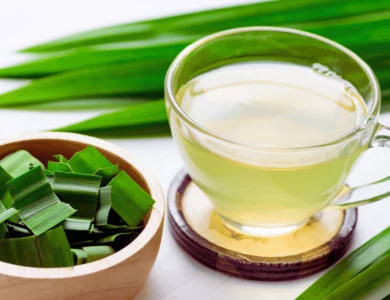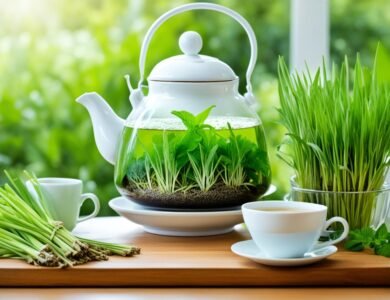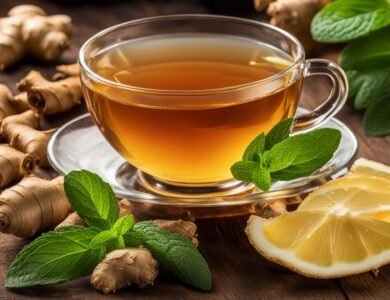
Welcome to our article series on the amazing benefits of oolong tea. In this first section, we will explore the transformative power of oolong tea on our metabolism and overall well-being. Oolong tea has gained popularity in recent years for its potential anti-obesity effects and ability to aid in weight management.
A study conducted on diet-induced overweight or obese subjects revealed that consuming 8 grams of oolong tea per day for 6 weeks led to a significant decrease in body fat content and body weight. Not only that, but oolong tea also showed improvements in lipid metabolism, including reduced plasma triglyceride and total cholesterol levels.
These findings suggest that regular consumption of oolong tea may not only help prevent obesity but also promote overall weight management. Considering the escalating obesity rates worldwide, the metabolism-boosting properties of oolong tea offer exciting possibilities for those striving to maintain a healthy weight.
Stay tuned for the next section, where we delve into the science behind oolong tea, exploring the different varieties and brewing methods that contribute to its unique flavor profiles and health benefits.
The Science Behind Oolong Tea: Different Varieties and Brewing Methods
Oolong tea, a traditional Chinese tea, is derived from the same plant as black and green teas. However, the leaves undergo a distinctive partial oxidation process, which determines the tea’s color, flavor, and nutritional content. The level of oxidation can vary, resulting in different varieties of oolong tea with unique taste profiles.
One of the main factors that differentiate oolong teas is their oxidation level. Greener oolong teas, with less oxidation, tend to have a vibrant and fresh taste, reminiscent of fruits and flowers. On the other hand, darker oolong varieties, which undergo more oxidation, offer a robust and roasted flavor, occasionally displaying hints of caramel or nuts.
To experience the true essence of oolong tea, it is essential to follow traditional brewing methods. Begin by using water that is just shy of boiling to preserve the delicate flavors. Steep the tea leaves for approximately three minutes, allowing them to unfurl and release their full potential.
This precise brewing process guarantees optimal flavor and maximizes the tea’s antioxidant activity, ensuring you enjoy all the health benefits associated with oolong tea.
To sum up, different varieties of oolong tea offer an array of taste profiles, from light and floral to rich and roasted. By adhering to traditional brewing methods, you can unlock the tea’s full potential, savoring its unique flavors and reaping the benefits of its antioxidants and other essential compounds.
Oolong Tea: A Metabolism-Boosting Beverage for Weight Management
Oolong tea is not just a delicious beverage, but it also offers numerous health benefits for weight management and overall well-being. Let’s explore how oolong tea can help you achieve your weight loss goals, boost energy levels, and improve digestion.
Weight Loss Benefits of Oolong
Research has shown that oolong tea can be a powerful ally in weight management. Consuming oolong tea has been found to stimulate fat burning and increase calorie expenditure by up to 3.4%. These effects can help support your weight loss journey and enhance the effectiveness of your diet and exercise regimen.
The polyphenols present in oolong tea play a crucial role in its weight loss benefits. These natural compounds help lower blood sugar levels, reduce insulin resistance, and decrease the risk of diabetes and obesity. By regulating blood sugar and insulin levels, oolong tea can help prevent spikes and crashes, allowing you to maintain stable energy levels throughout the day.
Oolong Tea for Energy
If you’re looking for a natural energy boost, oolong tea is an excellent choice. The combination of caffeine and other bioactive compounds in oolong tea can provide a gentle, sustained energy lift without the jitters associated with higher caffeine content. Enjoy a cup of oolong tea in the morning or afternoon to stay focused and energized.
Improving Digestion with Oolong
Enjoying a cup of oolong tea after a meal can aid in digestion and promote a healthy gut. Oolong tea contains antioxidants and catechins that help reduce inflammation and support the growth of beneficial gut bacteria. These properties may help alleviate digestive discomfort and enhance nutrient absorption, ensuring that you get the most out of your meals.
Incorporating oolong tea into your daily routine can provide you with the metabolism-boosting benefits you need to support your weight management goals. Whether you’re looking to shed a few pounds, improve energy levels, or optimize digestion, oolong tea can be a delicious and beneficial addition to your wellness routine.
The Antioxidant Power of Oolong Tea for Skin Health
Oolong tea is a delightful beverage that not only satisfies your taste buds but also offers numerous health benefits. If you’re looking to improve your skin health, oolong tea might just be the answer. This ancient Chinese tea is packed with antioxidants that can protect your skin from aging and environmental damage.
Antioxidants, such as polyphenols, play a crucial role in neutralizing harmful free radicals, which can cause oxidative stress and lead to premature aging. Oolong tea is particularly rich in these powerful antioxidants, even more so than green and black teas.
Regular consumption of oolong tea can help reduce oxidative stress, prevent the formation of wrinkles, and improve the overall appearance of your skin. By incorporating this delicious tea into your daily routine, you can promote a healthy complexion and radiant skin.
Oolong tea’s skin-protective properties are not limited to its antioxidant content. This tea also contains other beneficial compounds, such as vitamins and minerals, that contribute to skin health. These nutrients support the production of collagen, a protein that keeps your skin firm and elastic, helping to reduce the appearance of fine lines and wrinkles.
To enjoy the skin benefits of oolong tea, you can simply incorporate it into your daily routine. Brew yourself a cup of oolong tea in the morning or afternoon and savor its rich flavor while reaping its skin-boosting effects.
- Drink oolong tea regularly to reduce oxidative stress and protect your skin from aging.
- Enjoy the delicious taste of oolong tea while improving the overall appearance of your skin.
- Benefit from the vitamins and minerals present in oolong tea that support collagen production for youthful-looking skin.
By incorporating oolong tea into your daily routine, you can nourish your body with powerful antioxidants and contribute to your skin’s health and vitality.
Understanding the Caffeine Content of Oolong Tea
Oolong tea is a beloved beverage renowned for its unique flavor and potential health benefits. While many people enjoy oolong tea for its taste, it’s also important to consider its caffeine content. Let’s take a closer look at the caffeine levels in oolong tea and how it can provide a natural boost of energy.
Oolong tea contains caffeine, although the exact amount can vary depending on factors such as the brewing method and the type of oolong tea. Compared to black tea, oolong tea generally contains less caffeine. However, it typically has more caffeine than green tea, making it a middle ground for those seeking a moderate caffeine intake.
In each cup of oolong tea, you can expect to find approximately 38 milligrams of caffeine. This moderate caffeine content provides a gentle stimulant effect, helping you to stay alert and focused without the jitters associated with higher caffeine levels.
Caffeine is known for its ability to boost energy levels and improve mental alertness. By incorporating oolong tea into your daily routine, you can enjoy a natural pick-me-up that can help you power through your day.
To put the caffeine content of oolong brew into perspective, a cup of coffee typically contains around 95 milligrams of caffeine, while a cup of green tea contains approximately 28 milligrams. With its caffeine content falling in between these two popular beverages, oolong tea offers an appealing balance for those looking for a refreshing yet energizing drink.
So, whether you need a little extra focus for work or a revitalizing boost for your afternoon, oolong tea can be a fantastic choice. Its moderate caffeine content, combined with its delicious taste and potential health benefits, make it an excellent beverage to incorporate into your daily routine.
To enjoy a steaming cup of oolong, all you need to do is brew it to perfection using the appropriate water temperature and steeping time. And remember, if you prefer to savor your tea on the go, oolong tea is also available in convenient tea bag form.
In Summary
- Oolong tea contains caffeine, although the exact amount may vary.
- Compared to black tea, oolong tea generally has less caffeine but more than green tea.
- A cup of oolong tea typically contains around 38 milligrams of caffeine.
- Oolong tea provides a moderate caffeine boost without the jittery effects.
- It can be a suitable choice for individuals seeking a natural energy source.
The Nutritional Profile of Oolong Tea and How to Enjoy It
Oolong is not only a delightfully refreshing beverage but also a treasure trove of health-boosting nutrients. Packed with antioxidants, oolong tea can help protect your cells from damage caused by harmful free radicals.
One of the main benefits of oolong tea is its high antioxidant content. Antioxidants play a crucial role in promoting overall health and well-being. They help combat inflammation, boost the immune system, and reduce the risk of chronic diseases.
In addition to antioxidants, oolong is a good source of other essential nutrients, including manganese, potassium, and magnesium. These minerals are vital for maintaining healthy bodily functions, supporting bone health, and promoting optimal energy levels.
To fully enjoy the health benefits of oolong tea, it’s important to brew it properly. Start by using water that is just shy of boiling to ensure the delicate flavors and antioxidants are preserved. Steep the tea for approximately 3 minutes to achieve the perfect balance of flavor and antioxidant activity.
Oolong comes in various varieties, each with its unique taste and characteristics. Whether you prefer a light and floral oolong or a robust and earthy one, there’s a type of oolong tea to suit every palate.
With its wide availability in both loose-leaf and tea bag forms, oolong tea is a convenient beverage that can be enjoyed at home, at work, or on the go. So why not incorporate this flavorful and nutrient-packed tea into your daily routine and experience the many benefits it has to offer?
Source Links
- webmd.com/diet/health-benefits-oolong-tea
- pubmed.ncbi.nlm.nih.gov/19271168/
- sciencedirect.com/science/article/pii/S0022316622144937




